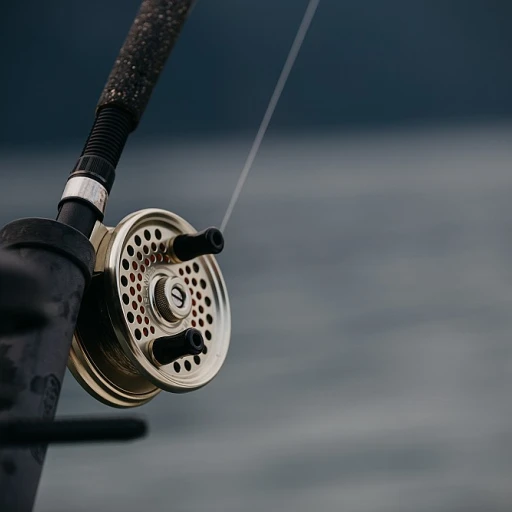
Great white shark: an incredible ocean predator
The legend of alfred dean and his great white shark
When it comes to the largest fish ever caught, one name towers over many: Alfred Dean. Back in April 1959, this Australian fisherman made history. Off the coast of Ceduna, Australia, Dean caught a behemoth great white shark that weighed in at a staggering 2,664 pounds (1,208 kg). To this day, it remains the largest fish ever caught on rod and reel.
Expert insights into the catch
In interviews, Dean has shared that the battle with the great white wasn’t just a test of strength, but also of endurance and strategy. “Timing my pulls and letting the shark tire itself out—those were key moves,” he said, recounting his incredible achievement. His choice of equipment also played a crucial role in this legendary vintage tackle record.
Facts and figures by the international game fish association
The International Game Fish Association (IGFA) has officially recognized Dean’s catch as the all-time record for the largest great white shark ever caught on rod and reel. For context, the average great white shark caught ranges between 1,500 and 2,000 pounds. Dean’s catch wasn’t just oversized but colossal in comparison.
The global impact of dean's catch
Dean’s incredible catch has inspired countless anglers worldwide. Ken Fraser, a notable fisherman from Canada, once said, “Alfred Dean set a benchmark that many of us aspire to reach. His catch is a milestone in sport fishing history.” The great white shark continues to be a prized catch in Australia, the United States, and beyond, thanks in part to Dean’s legendary feat.
Bluefin tuna: a colossal contender
Bluefin tuna: a colossal contender
When it comes to the largest fish ever caught, the bluefin tuna often swims into the spotlight. Anglers around the globe have tales of battling with these giants, some of which have weighed over 1,000 pounds. Take Ken Fraser, who holds the current record for the largest bluefin tuna ever caught on rod and reel. His catch tipped the scales at a whopping 1,496 pounds, snagged off the coast of Nova Scotia, Canada in 1979.
What makes bluefin tuna so appealing to fishermen? It's their sheer size and the challenging fight they put up. These fish are known for their incredible speed and agility, often requiring anglers to use specialized tackle and reel techniques. The International Game Fish Association (IGFA) lists numerous record-setting bluefin tuna, showcasing the species' dominance in the sportfishing world.
But the pursuit of giant bluefin isn't just about breaking records—it's also about preserving the species. With bluefin tuna populations under threat from overfishing, sustainable fishing practices and regulations are crucial to ensuring that future generations can experience the thrill of chasing these ocean behemoths. The IGFA and other organizations work tirelessly to promote ethical angling and conservation efforts.
The giant wels catfish: Europe's freshwater behemoth
Europe's freshwater behemoth
The giant wels catfish, known as Silurus glanis, is a species that sparks excitement among European anglers. Weighing in at tremendous sizes, these freshwater giants have built quite a reputation. Native to several European countries including Spain, Italy, and even parts of Central and Eastern Europe, the wels catfish is the ultimate catch for those who seek the thrill of reeling in something massive.
Among the legendary catches, the wels catfish holds numerous records. One of the most jaw-dropping stories is the capture of a wels catfish in Spain that weighed a staggering 250 pounds (113 kg). This incredible fish was caught using rod and reel by German angler Benjamin Gründer, gaining global attention. According to the International Game Fish Association (IGFA), wels catfish have frequently set and broken records in the freshwater fish category.
These catfish are infamous for their long lifespan, rapid growth, and insatiable appetite. Anglers often utilize a variety of baits ranging from nightcrawlers to live fish, making the hunt for wels catfish a versatile and challenging endeavor. Their habitat varies from slow-moving rivers to lakes and even large ponds, keeping anglers guessing and strategizing their next big catch.
A notable case study comes from Italy's River Po, where the wels catfish population is thriving. Considered an invasive species in some parts of Europe, its introduction has dramatically affected local ecosystems. Yet, this population surge has made the River Po a hotspot for anglers from around the world. The giant wels catfish not only presents a challenge but also reinforces the importance of proper fish management and conservation practices.
Ken Fraser, a respected figure in the angling community, has often spoken about the adrenaline rush of catching these giants. He suggests a methodical approach, incorporating state-of-the-art tackle and patient fishing techniques. Understanding local water temperatures and seasonal behaviors are key to hooking a wels catfish as enormous as those documented in Europe.
If you aim to tackle the giant wels catfish, joining local fishing clubs or participating in forums can vastly enhance your chances. These platforms provide tips, share experiences, and foster camaraderie among anglers. For more on building such connections, check out how local fishing clubs enhance angler expertise.
The allure of the giant wels catfish continues to draw fishing enthusiasts to European waters, solidifying its status as one of the largest and most elusive freshwater catches. Whether you're on the banks of Spain's rivers, Italy's Po, or other catfish-rich waters, the adventure promises to be both rewarding and unforgettable.
Mekong giant catfish: freshwater giants from Asia
Freshwater leviathans of the Mekong river
The Mekong giant catfish (Pangasianodon gigas) holds the reputation of being one of the largest freshwater fish ever, and it’s no wonder why this awe-inspiring species has captivated anglers worldwide. These gentle behemoths, native to the Southeast Asian Mekong River, are known for growing up to 10.5 feet long and weighing an astounding 646 pounds. Documented cases highlight the vast size these fish can reach, with one notable catch in 2005 tipping the scales at a hefty 646 pounds, setting a record for the largest freshwater fish ever caught. Courtesy IGFA.
An endangered wonder
Unfortunately, Mekong giant catfish are now classified as critically endangered by the International Union for Conservation of Nature (IUCN). Factors contributing to their decline include overfishing, dam construction on the river, and habitat degradation. This has spurred efforts from environmental organizations and governments to protect and conserve these gentle giants. Being one of the largest species documented, their conservation remains paramount to maintaining the ecological balance of the Mekong River.
The thrill of the catch
For anglers pursuing the thrill of catching these giants, Thai tourism has leveraged this fascination, offering guided fishing expeditions within regulated zones to prevent overexploitation. The feeling of battling a fish of such magnitude, where sheer strength and stamina are necessary, is described by Ken Fraser, a legendary angler, as a once-in-a-lifetime experience. It’s not just a catch; it’s a marathon of skill, patience, and endurance.
Facts and figures
According to a survey conducted by WWF, the Mekong River is home to over 1,200 fish species, but none hold the mystique like the Mekong giant catfish. This river sustains the livelihoods of millions of people across Thailand, Cambodia, Laos, and Vietnam, making the conservation of its aquatic life crucial.
For those intrigued by legendary fishing stories, explore more about the majestic greenland shark and the game fish champion, black marlin. These tales and battles with nature’s giants bring the world of professional angling to life.
Black marlin: the apex game fish
Marlin masters: why the black marlin stands out
The black marlin is truly an apex predator in the game fishing world. Known for its incredible speed and power, this species has captured the imagination of anglers globally. Weighing up to an astonishing 1,560 pounds, the black marlin holds its ground as one of the ocean's giants.
Ken Fraser, an internationally recognized angler, recalls his encounter with a colossal black marlin off the coast of Australia. He states, "It’s a battle of endurance and strength. Hooking a black marlin is an experience like no other." This sentiment is echoed by many who have faced these majestic creatures. (secret behind landing a prize-winning catch).
Record-breaking achievements
The International Game Fish Association (IGFA) lists numerous records for black marlin, making it one of the most sought-after trophies in sports fishing. The largest black marlin ever caught weighed a staggering 1,560 pounds and was reeled in by Alfred Dean in 1953 off the coast of Cabo Blanco, Peru. These creatures are formidable opponents, often putting up a prolonged and intense fight, testing the skills of the most seasoned anglers.
Another notable record was set in 1991 by an angler off the coast of Hawaii, where a black marlin weighing 1,289 pounds was caught. These records showcase the immense size and strength of the black marlin, further solidifying its reputation within the fishing community.
The thrill of the chase
The black marlin isn't just about the weight or size; it's the chase that hooks anglers. Whether it's the waters off the coast of Canada or the shores of Thailand, the adventure of pursuing this game fish is unparalleled. Many who have experienced the thrill of catching a black marlin describe it as a dance of agility and patience.
From the initial strike to the final moments of reeling it in, every second is filled with adrenaline. With the right techniques and patience, beating personal records is a plausible dream, making the black marlin a premium target for every serious sport fisher.
Future of black marlin fishing
Sustainable fishing practices are becoming more crucial to preserve the populations of such magnificent species. Organizations like the International Game Fish Association are at the forefront, promoting responsible fishing. By continuing to follow guidelines and regulations, we can ensure that future generations will also have the opportunity to experience the unmatched thrill of catching a black marlin.
Do you have your own tales of giant fish? Whether it’s a black marlin or another ocean titan, the joy of recounting your fishing conquests is priceless. Let’s keep the stories and the spirit of responsible angling alive!
Atlantic blue marlin: champions of the sea
Marlin's majesty: atlantic blue marlin
Few fish can rival the Atlantic blue marlin in both size and splendor. This species isn’t just a giant in the ocean; it symbolizes the epitome of game fishing. With their sleek, powerful bodies and signature spear-like bills, Atlantic blue marlins have carved out a legendary niche in the sport.
The largest Atlantic blue marlin ever caught tipped the scales at an astonishing 1,402 pounds, famously reeled in by angler Paulo Amorim off the coast of Vitoria, Brazil, in 1992. This record still stands, captivating the imaginations of sports fishers worldwide.
When talking about monumental catches, Ken Fraser's accomplishment is another epic tale. In 1979, off the shores of Nova Scotia, Ken caught a monstrous bluefin tuna. Though not an Atlantic blue marlin, Fraser's record 1,496-pound catch is often mentioned in game fishing debates, highlighting the immense sizes these sea creatures can attain.
The thrill of catching a blue marlin isn't limited to its size. The fish is renowned for its aerobatic displays when hooked. The sight of a marlin leaping out of the water, trying to shake off a hook, is an adrenaline rush that few experiences on Earth can match. Fred Stone, a seasoned angler, once said, “Hooking a blue marlin is like tying your line to a rocket—we're in it for the ride of our lives” (International Game Fish Association, IGFA).
For the serious angler, tackling a blue marlin requires more than just strength and patience. It demands top-notch gear. The International Game Fish Association (IGFA) sets strict guidelines on the tackle used to ensure that catches are legitimate. A heavy-duty rod, a reel with substantial line capacity, and high-tensile fishing line are non-negotiables.
Off the coast of Cabo Blanco, Peru, legendary tales of colossal marlins caught on rod and reel still echo in the fishing community. This spot, often referred to as the “mecca of marlin fishing,” draws anglers from around the globe yearning for a piece of the action.
Interestingly, studies have shown that the Atlantic blue marlin population is under threat due to overfishing. Conservation efforts by organizations like the International Game Fish Association are crucial in ensuring that future generations can marvel at and experience the majesty of this incredible species. They're not just protecting fish; they're preserving stories and legacies that span generations.
From the tales of coastal villages in Spain to the bustling fishing tournaments in Florida, the Atlantic blue marlin continues to be a symbol of ultimate triumph and the spirit of the sea. It’s about respecting the fish, the sport, and the environment in which they thrive.
Greenland shark: the mysterious deep-sea ruler
Greenland shark: a deep-sea enigma
The Greenland shark is a creature that has puzzled scientists and fishermen alike for centuries. Renowned for its remarkable lifespan, this astonishing species can live up to 400 years, making it the longest-living vertebrate known to science. Residing primarily in the North Atlantic and Arctic Oceans, the Greenland shark thrives in cold, deep waters where human encounters are incredibly rare.
One of the most famous Greenland sharks ever documented was caught near Norway in 1987. This colossal aquatic beast measured an impressive 24 feet long and was estimated to weigh over 2,200 pounds. The enormous scale of this catch left onlookers and marine biologists equally astounded.
Dr. Julius Nielsen, a Greenland shark researcher at the University of Copenhagen, has dedicated much of his career to studying these elusive giants. Nielsen's groundbreaking research has revealed fascinating insights into their slow growth rates and late sexual maturity, contributing valuable knowledge to the world of marine biology (source).
Despite their formidable size, Greenland sharks are primarily scavengers, feeding on a diet of fish and marine mammals. Their slow and deliberate movements, coupled with diminished eyesight due to a parasitic copepod that attaches itself to their eyes, make them less active hunters compared to other sharks. These traits have allowed the Greenland shark to adapt to its harsh, icy habitat, demonstrating the incredible resilience and adaptability of these ancient sea creatures.
Though not traditionally targeted by recreational fishermen due to their deep-water habitat, the mystique of the Greenland shark continues to pique the curiosity of anglers and marine enthusiasts worldwide. Those who are lucky enough to encounter one of these giants often regard it as a once-in-a-lifetime experience, akin to capturing photographic evidence of a living dinosaur.
The preservation of the Greenland shark is crucial, not only for maintaining ecological balance in its Arctic environment but also for the continued opportunity to study and understand this fascinating species. Including them in the International Game Fish Association (IGFA)'s records brings attention to the significance and unique nature of these underwater marvels. The more we learn about the Greenland shark, the more respect and awe we develop for one of the ocean's true hidden gems.
Personal stories: legendary tales from the anglers
Ken fraser and his legendary bluefin tuna catch
When you think about the largest fish ever caught, Ken Fraser’s name often pops up. Back in 1979, off the chilly waters of Nova Scotia, Canada, Ken Fraser reeled in a colossal bluefin tuna weighing a mind-boggling 1,496 pounds (680 kg). The International Game Fish Association (igfa.org) still recognizes this remarkable catch as a standing world record to this day.
Ken Fraser’s triumph was no accident. It took skill, patience, and a whole lot of determination. His battle with the bluefin is the stuff of legends, as he fought tirelessly for hours before finally winning the epic tug-of-war. Fraser’s bluefin tuna isn’t just the largest of its kind ever caught; it’s become a symbol of what an angler can achieve with the right combination of talent and tenacity.
Alfred Dean: taming the great white shark
In 1959, Alfred Dean became a household name in the fishing community when he captured an immense great white shark off the coast of Australia. This aquatic giant weighed an astonishing 2,664 pounds (1,208 kg), setting a record that remains unbroken. Dean’s feat was a culmination of both fearless spirit and skillful tackle management, testament to the might of the great white as an apex predator in the ocean realm.
It’s not hard to imagine the sheer terror and excitement this moment must have held, as Dean wrestled with the world's largest fish ever caught on rod and reel. His experience contributes to the legend that surrounds the great white shark.
Tim Smith’s massive wels catfish: a European wonder
Moving on to freshwater giants, Tim Smith from the UK made headlines in 2017 with his capture of an enormous wels catfish. Caught in Spain’s River Ebro, this behemoth weighed an impressive 280 pounds (127 kg). Nope, this isn't a fish tale! The igfa listed Smith’s wels catfish as one of the most remarkable catches in freshwater fishing history.
For those wondering what it’s like to catch such a giant, Smith recalls, "When I felt the tug, I knew it was something special. This wasn’t just any fish; this was a giant fighting for its life." Smith’s words offer a vivid glimpse into the adrenaline-pumping experience of wrestling a freshwater monster.
The legacy of Thailand's Mekong giant catfish
Another freshwater titan, the Mekong giant catfish, has seen incredible catches in Thailand. In 2005, a local fisherman captured a specimen weighing in at 646 pounds (293 kg), a considerable example of Mekong catfish's enormous size. These catfish are crucial to regional ecology and culture, often becoming the centerpiece of extraordinary fishing tales.
While the Mekong giant catfish itself might not always make the news, the ongoing efforts to conserve this species highlight its importance. Owing to their size and rarity, they cement their place among the largest freshwater fish ever caught.
The thrill and challenge of fishing legends
Every one of these anglers, from Ken Fraser with his bluefin tuna to Alfred Dean with his great white shark, shares a common thread: the thrill of the fight and the immense satisfaction of a record-breaking catch. Personal stories in fishing add color and depth to our understanding of these impressive feats, making each catch more than just a number or a record but a saga of human spirit, skill, and chances taken against nature’s giants.

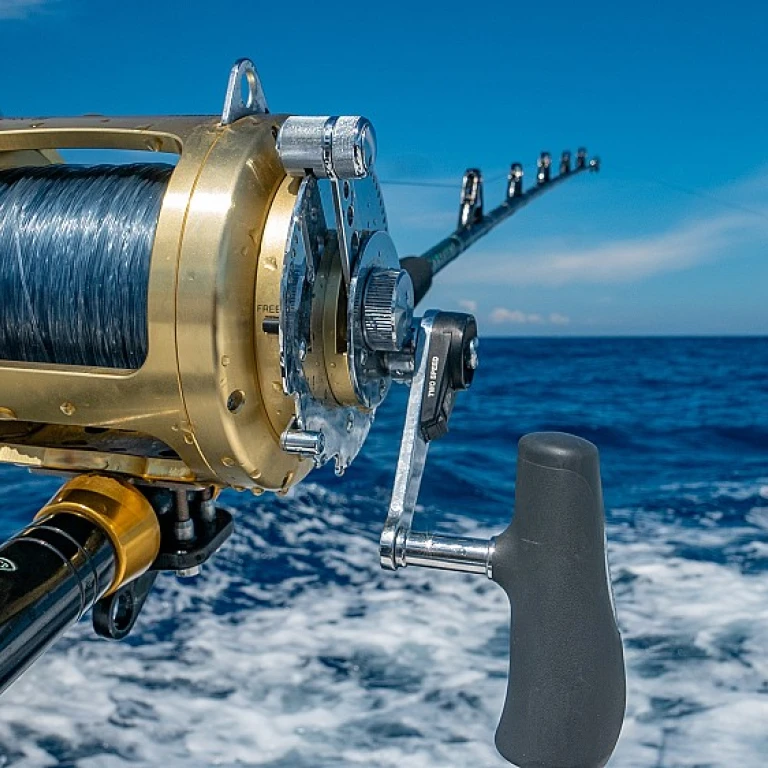


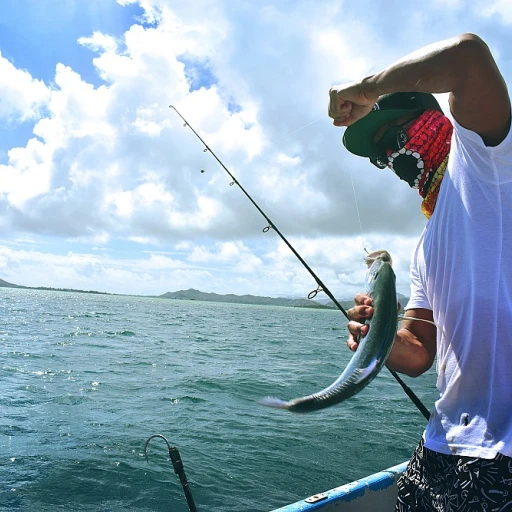
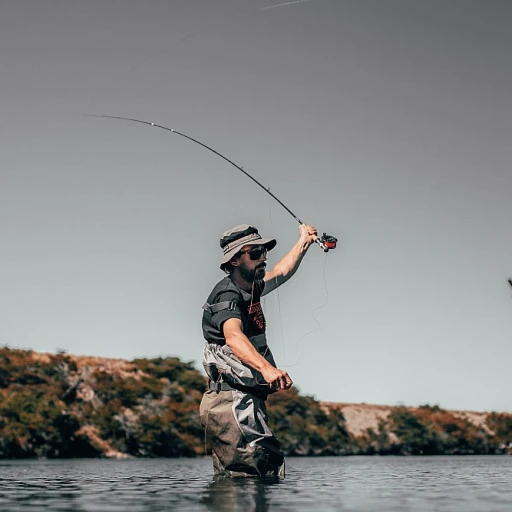
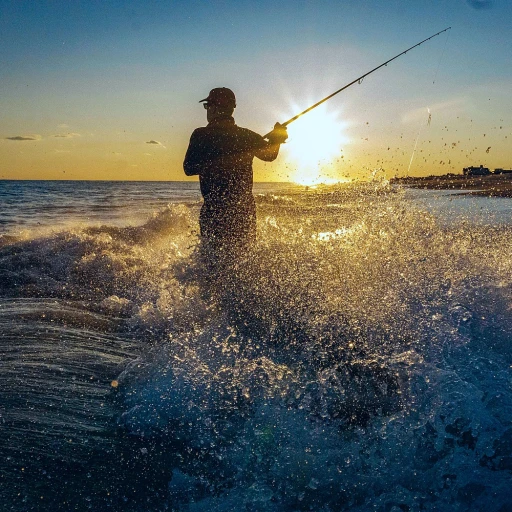


-large-teaser.webp)
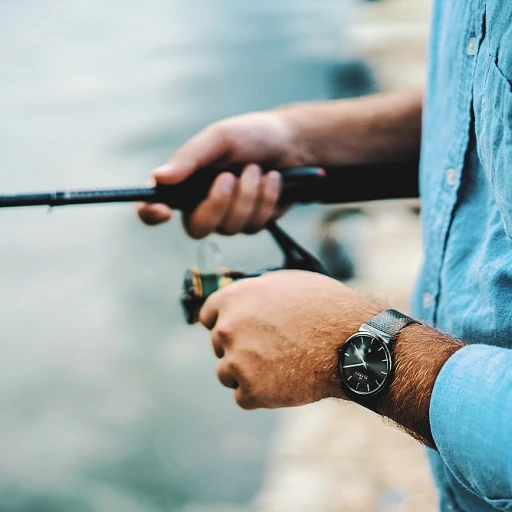
-large-teaser.webp)

